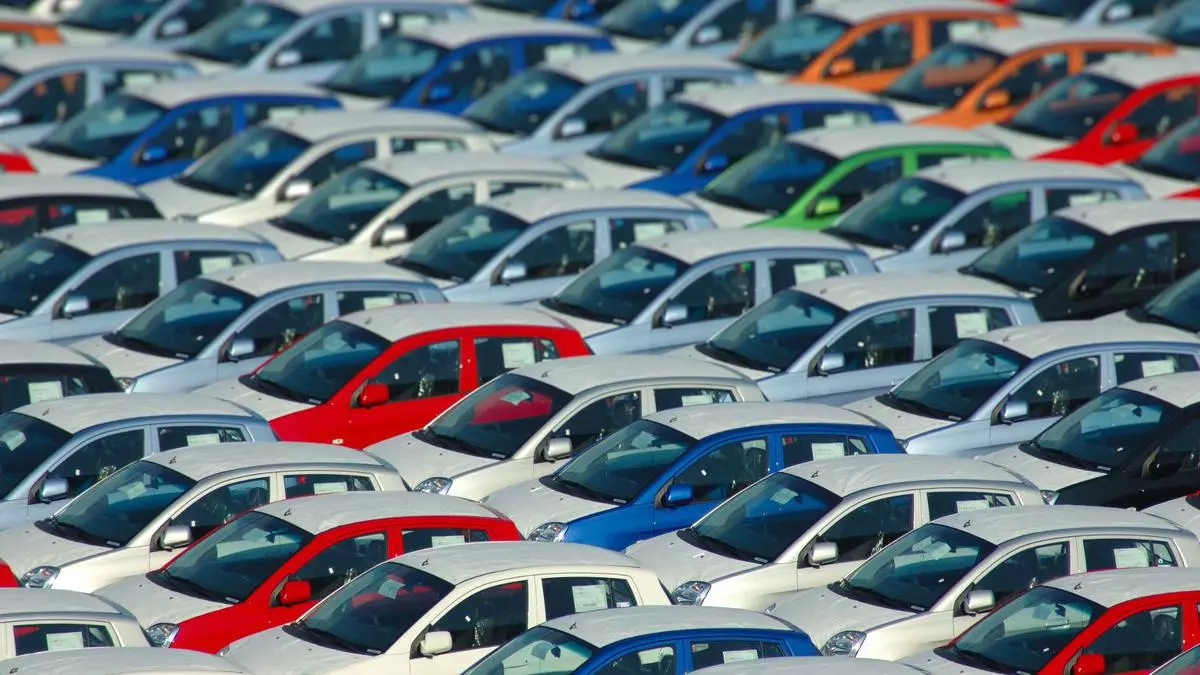Indian automobile industry records 12.5% growth in FY24

The Indian automobile industry posted a satisfactory performance, with the domestic industry growing by 12.5 per cent during the last financial year (FY24) to 2,38,53,463 units compared with 2,12,04,846 in the previous year, Society of Indian Automobile Manufacturers (SIAM) said on Friday.
In the passenger vehicle (PV) segment, the total wholesale (dispatches to dealers) grew by more than eight per cent to 42,18,746 units during the year as compared with 38,90,114 units in FY23.
The sales were led by the utility vehicle (UV) segment, which grew by around 26 per cent to 25,20,691 units during the last financial year, compared with 20,03,718 units in FY23.
Two and three-wheeler segments
The total two-wheeler wholesales also grew by more than 13 per cent to 1,79,74,365 units in FY24 in the domestic market as compared with 1,58,62,771 units in the April-March period of FY2022-23, the latest data shared by SIAM said.
In the three-wheeler segment, total domestic sales grew by 41.5 per cent to 6,91,749 units, compared with 4,88,768 units in the previous year.
However, the total commercial vehicle sales grew marginally (0.6 per cent) 9,67,878 units during the year as against 9,62,468 units in FY23.
“On the backdrop of a robust economic growth of 7.6 per cent based on conducive policies of the government, the Indian automobile industry has posted a satisfactory performance with domestic industry growing by 12.5 per cent during the last financial year,” Vinod Aggarwal, President, SIAM told reporters here.
The year also demonstrated the auto industry’s sustainability commitments, he said, as it commenced producing vehicles materially compliant to 20 per cent ethanol and witnessed growth of 90 per cent in electric passenger vehicles and 30 per cent in electric two-wheelers, he said.
“Passenger Vehicle segment led the growth with overall sales touching almost five-million units including 4.2 million domestic (growth of 8.4 per cent) and 0.7 million exports. Two-wheeler segment continued the recovery path with a handsome growth of over 13 per cent in domestic sales to almost 18 million units, even though still lower than the earlier peak of 21 million units in FY19,” Aggarwal said.
On commercial vehicles, he said the industry had a marginal growth to 9.7 million units and within that, some drop was experienced in light commercial vehicles (LCVs) and small commercial vehicles (SCVs) due to degrowth in CNG segment. The growth in CVs was also impacted due to migration to higher tonnage trucks, which created higher payload capacity that is not reflected in the number of units, he said, adding that the three-wheeler industry is almost close to the earlier peak of 0.7 million units in FY19.
“Overall exports remained under stress during the last financial year with sizeable drop in CVs, two-wheelers and three-wheelers, though passenger vehicles grew marginally. However, good recovery was seen in the last quarter, especially for two-wheelers, indicating better potential for the current year,” he said.
In terms of future outlook, Aggarwal said that the industries will remain optimistic as the macroeconomic outlook remains positive. Coupled with good monsoon outlook, the industry is expecting continued growth this year as well, he added.



